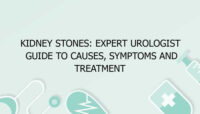Heart disease is a broad term that encompasses a variety of conditions affecting the heart and blood vessels. It is a leading cause of death globally, and understanding its types, causes, symptoms, and treatments is essential for maintaining heart health. From coronary artery disease to heart failure, there are several types of heart disease, each with its unique characteristics and risk factors. While some types are preventable with lifestyle changes, others may be hereditary or develop over time due to underlying health conditions. In this article, we will explore the different types of heart disease, providing a comprehensive overview of each condition, how they develop, and what can be done to prevent or manage them.
1. Coronary Artery Disease (CAD)
Coronary artery disease (CAD), also known as coronary heart disease (CHD), is one of the most common and serious types of heart disease. It occurs when the coronary arteries, which supply oxygen-rich blood to the heart muscle, become narrowed or blocked due to the buildup of plaque—a mixture of fat, cholesterol, and other substances. This condition is primarily caused by atherosclerosis, a process where plaque accumulates in the artery walls over time.
The reduced blood flow to the heart can lead to chest pain (angina) or more severe conditions like heart attacks. In some cases, CAD can develop gradually without noticeable symptoms until a heart attack or other complications occur. Risk factors for CAD include high cholesterol, high blood pressure, diabetes, smoking, and sedentary lifestyle.
To diagnose CAD, doctors typically perform electrocardiograms (EKGs), stress tests, coronary angiograms, and CT scans to identify blockages in the coronary arteries. Treatment options often include medications to control blood pressure, cholesterol, and blood sugar, as well as lifestyle changes such as improved diet and increased physical activity. In more severe cases, procedures like angioplasty or coronary artery bypass surgery may be required to restore blood flow to the heart.
2. Heart Failure
Heart failure is a condition in which the heart is unable to pump blood effectively to meet the body’s needs. It does not mean that the heart has stopped working, but rather that it has become weakened or damaged. There are two main types of heart failure:
- Left-sided heart failure: This occurs when the left side of the heart is unable to pump blood efficiently to the body. This results in fluid buildup in the lungs, leading to symptoms like shortness of breath and fatigue.
- Right-sided heart failure: This happens when the right side of the heart fails to pump blood to the lungs. As a result, fluid can accumulate in the abdomen, legs, and feet.
Causes of heart failure include coronary artery disease, high blood pressure, valve diseases, cardiomyopathy, and previous heart attacks. People with heart failure may experience fatigue, shortness of breath, and swelling in the legs or abdomen.
Diagnosing heart failure often involves physical examinations, blood tests (e.g., B-type natriuretic peptide), and imaging tests like echocardiograms and chest X-rays. Treatment for heart failure typically involves lifestyle changes, medications (e.g., ACE inhibitors, beta-blockers, diuretics), and in some cases, devices like pacemakers or a left ventricular assist device (LVAD) to help the heart pump blood more effectively.
3. Arrhythmias (Heart Rhythms Disorders)
An arrhythmia is an abnormal heart rhythm, meaning the heart may beat too fast, too slow, or in an irregular pattern. There are several types of arrhythmias, including:
- Atrial fibrillation (AFib): This is the most common type of arrhythmia, where the upper chambers of the heart (atria) beat irregularly and out of sync with the lower chambers (ventricles).
- Ventricular tachycardia: This occurs when the heart’s lower chambers (ventricles) beat too quickly, which can lead to a cardiac arrest if not treated promptly.
- Bradycardia: This refers to a slow heart rate (typically under 60 beats per minute).
- Tachycardia: An unusually fast heart rate, often over 100 beats per minute.
Arrhythmias can be caused by factors such as coronary artery disease, heart attacks, high blood pressure, heart valve disease, and electrolyte imbalances. Some arrhythmias, like AFib, may cause symptoms like palpitations, dizziness, and fatigue, while others may be asymptomatic.
Diagnosing arrhythmias often involves electrocardiograms (EKGs), Holter monitors, or electrophysiology studies to evaluate the electrical activity of the heart. Treatment may involve medications (e.g., antiarrhythmic drugs, blood thinners), cardioversion (a procedure to reset the heart rhythm), or surgical interventions like ablation or implantation of a pacemaker or implantable cardioverter-defibrillator (ICD) to regulate the heart’s rhythm.
4. Valvular Heart Disease
The heart contains four valves that regulate blood flow through the chambers: the mitral valve, aortic valve, tricuspid valve, and pulmonary valve. Valvular heart disease refers to any condition in which one or more of these valves become damaged or diseased, leading to improper blood flow. Common types of valvular diseases include:
- Aortic stenosis: A narrowing of the aortic valve that restricts blood flow from the heart to the rest of the body.
- Mitral valve prolapse: A condition where the mitral valve doesn’t close properly, allowing blood to leak backward into the left atrium.
- Regurgitation: A condition where the valve does not close tightly, causing blood to flow backward (in the wrong direction).
- Stenosis: The valve becomes stiff and doesn’t open fully, restricting blood flow.
Valvular heart disease can be caused by congenital defects, rheumatic fever, aging, or heart infections. Symptoms may include fatigue, shortness of breath, chest pain, and dizziness.
Diagnosis typically involves echocardiograms, electrocardiograms (EKG), and cardiac catheterization. Treatment options depend on the severity of the valve problem and may include medications to manage symptoms, surgical repair, or valve replacement. In some cases, minimally invasive procedures like transcatheter aortic valve replacement (TAVR) may be performed.
5. Congenital Heart Disease
Congenital heart disease refers to heart defects that are present at birth. These can range from mild conditions that cause no symptoms to severe defects that affect the heart’s ability to function properly. Common congenital heart defects include:
- Septal defects: Holes in the walls (septum) separating the heart’s chambers, which can allow blood to flow between them.
- Coarctation of the aorta: A narrowing of the aorta, which can restrict blood flow to the body.
- Tetralogy of Fallot: A combination of four heart defects that lead to reduced oxygen in the blood and blue-tinged skin (cyanosis).
Congenital heart disease is often diagnosed early in life, but in some cases, it may not be discovered until adulthood. Symptoms can include shortness of breath, fatigue, and difficulty with physical exertion.
Diagnosis typically involves echocardiograms, electrocardiograms (EKG), and cardiac MRI. Treatment may involve medications, surgery, or catheter-based interventions to repair or manage the defect.
Table: Common Types of Heart Disease
| Type of Heart Disease | Characteristics and Symptoms |
|---|---|
| Coronary Artery Disease (CAD) | Blockage in coronary arteries leading to chest pain or heart attacks. |
| Heart Failure | Heart’s inability to pump blood effectively; causes shortness of breath. |
| Arrhythmias | Abnormal heart rhythms, including AFib, tachycardia, bradycardia. |
| Valvular Heart Disease | Damaged or diseased heart valves, leading to improper blood flow. |
| Congenital Heart Disease | Heart defects present at birth, ranging from mild to severe. |
Related FAQs About Types of Heart Disease
1. What is the most common type of heart disease?
The most common type of heart disease is coronary artery disease (CAD), which affects the coronary arteries that supply blood to the heart. It is caused by the buildup of plaque (atherosclerosis) in the arteries, leading to restricted blood flow to the heart muscle. This condition can cause chest pain (angina) and, in severe cases, heart attacks. Lifestyle factors such as poor diet, lack of exercise, and smoking contribute to the development of CAD, making it a preventable condition with the right lifestyle changes.
2. How can heart failure be treated?
Treatment for heart failure typically focuses on improving the heart’s ability to pump blood, relieving symptoms, and preventing further damage. This may include medications such as ACE inhibitors, beta-blockers
, and diuretics. In more severe cases, procedures like pacemaker implantation, heart transplant, or the use of a left ventricular assist device (LVAD) may be considered. Additionally, lifestyle changes such as following a heart-healthy diet, quitting smoking, and managing stress are important for managing heart failure effectively.
3. What causes arrhythmias?
Arrhythmias can be caused by a variety of factors, including coronary artery disease, high blood pressure, heart attacks, electrolyte imbalances, congenital heart defects, or infections affecting the heart. In some cases, arrhythmias can be triggered by lifestyle factors such as excessive caffeine consumption, alcohol use, or stress. Treatment for arrhythmias depends on the specific type and severity and may include medications, pacemaker implantation, or ablation procedures.
4. What are the signs of valvular heart disease?
Signs of valvular heart disease may include shortness of breath, fatigue, chest pain, swelling in the legs or abdomen, and dizziness. These symptoms arise due to the improper functioning of the heart valves, which can cause blood to flow backward (regurgitation) or restrict blood flow (stenosis). If left untreated, valvular heart disease can lead to more serious complications such as heart failure.
5. Is congenital heart disease treatable?
Yes, many types of congenital heart disease are treatable with surgery, catheter interventions, or medications. Advances in medical technology have made it possible to repair many heart defects successfully. Early diagnosis is key to managing congenital heart disease, and children born with these defects can often lead normal, healthy lives with proper treatment and care. In some cases, however, lifelong follow-up care is needed to monitor heart function and prevent complications.


